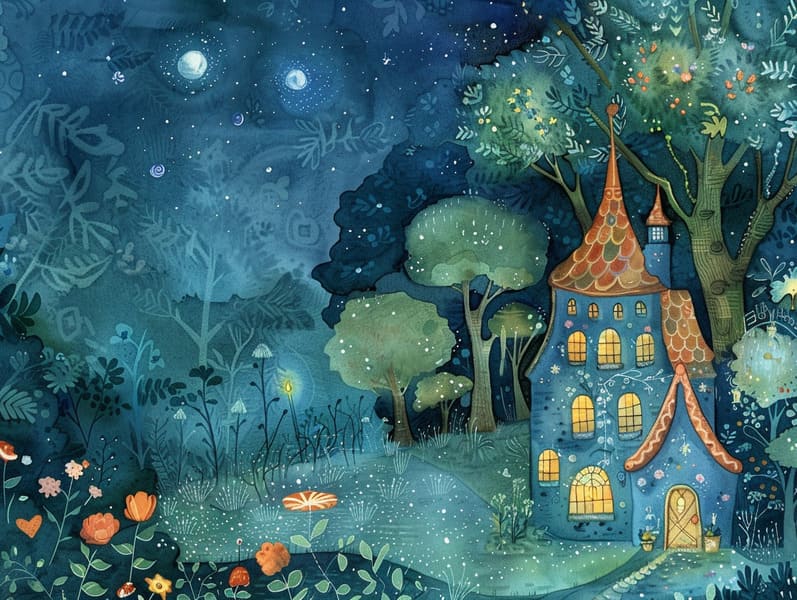The Genesis of Vintage Fairy Tales and Their Unwavering Charm.
The Genesis of Vintage Fairy Tales and Their Unwavering Charm.
Blog Article

Fairy tales for kids have legendary status. These tales have been relayed from one generation to the next well before they were ever published. They originated from a variety of societies, including American traditions. They were initially shared among adults, often carrying themes and messages concerning the societal norms and beliefs of the time.
The Brothers Grimm, Jacob and Wilhelm Grimm, were among the first to compile and release many of these beloved stories. Their collection, "Grimm's Children's Stories," included narratives like "The Little Glass Slipper," "Little Brother and Little Sister," and "The True Story of Snow White," which have since become mainstays in the world of traditional fairy tales. Similarly, the Danish author's enchanting tales, such as "The Sea Maid," and "The Duckling that Could," have stolen hearts worldwide, establishing their place in the pantheon of beloved fairy tales.
Though they are old, traditional fairy tales remain as important as ever, especially as bedtime stories for kids. These delightful tales are now available in various formats, including vividly illustrated books, charming animations, and digital fairy tales.
Their lasting presence can be traced to several whimsical characteristics:
Key Lessons: Traditional fairy tales often present important moral lessons. Fairy tales like "The Boy Who Cried Wolf" teach the significance of truthfulness, while "The Tale of the Tortoise and the Hare" show the virtues of steadfastness and unassuming nature. These stories offer the young clear distinctions between moral and immoral, building their moral compass in a mild yet deep way.
Compassion and Insight: Timeless fairy tales frequently present personalities facing struggles and tests, prompting readers to empathize with their struggles and root for their triumphs. For instance, "Beauty and the Beast" shows us the necessity of looking deeper to acknowledge the true character of a individual, nurturing understanding and recognition.
Cultural Perception: Many timeless fairy tales are steeped in the cultural contexts from which they came. Immersing in these stories can provide fascinating glimpses into different historical contexts, advancing a sense of global respect and respect.
Fantasy and Imagination: The whimsical elements in old fairy tales—talking animals—boost children’s creative dreams. These stories carry readers to mythical realms, firing up inventive thinking and a sense of fascination that persists a lifetime.
Ancient fairy tales are not only mesmerizing but also edifying. They provide alluring tools in advancing various cognitive and affective skills in young ones. When traditional fairy tales are spoken, they nurture communication skills by showing new language items and complicated sentence read more structures. This practice also cultivates listening skills and attention span, as kids remain attentive, keen to see what happens next.
Furthermore, analyzing the themes and characters of ancient fairy tales can sharpen thinking skills and thought processes. Kids are instructed to spot patterns, forecast, and make sense of cause and effect. These explorations also facilitate little ones voice their thoughts and feelings, advancing their emotional intelligence.
In today’s technological era, the prevalence of digital fairy tales has made these narratives more reachable than ever. Online resources and digital apps present comprehensive collections of popular fairy tales that can be seen or listened on anytime, anywhere. Fairy tales read out loud are particularly sought after, offering an delightful method for young ones to relish these magical stories. Spoken stories and read-out-loud stories take characters and settings to life, often enhanced by spellbinding music and harmonies that improve the tale-telling adventure.
The lasting allure of timeless fairy tales lies in their ability to shift to today's world while keeping their central messages. Contemporary renditions of these narratives often spotlight more representative figures and modern settings, making them accessible to today’s audience. However, the essential messages of heroism, charity, and fairness remain unchanged, continuing to strike a chord with audiences of all ages.
Timeless fairy tales also offer a sense of serenity and closeness. They present a orderly narrative with a unmistakable beginning, middle, and end, often finishing with the ending of conflicts and the triumph of virtue over wickedness. This reliability can be consoling for kids, rendering a sense of security in an fluctuating world.
Traditional fairy tales continue to enchant and inform new generations, maintaining their grace and value in modern society. As children's bedtime stories, they extend a perfect blend of wonder and wisdom, cultivating moral values, empathy, and creativity. The availability of online storybooks and the favor of fairy tales read out loud make sure that these old fairy tales remain attainable to new generations.
By safeguarding and distributing these tales, we continue to revere the rich tapestry of lore and cultural heritage. Whether you are browsing a artistically illustrated book, perusing a web-based library, or listening through an audiobook, the captivation of children's fairy tales is always within reach. These fairy tales highlight of the unchanging presence of tales and its ability to unify us across centuries and lands.
No matter if you are exploring a beautifully illustrated book, perusing a web collection, or hearing an audio story, the beauty of children's fairy tales is always within reach.
These narratives demonstrate of the consistent power of narratives and its ability to gather us across time and space, weaving a spell that delights and instructs alike.